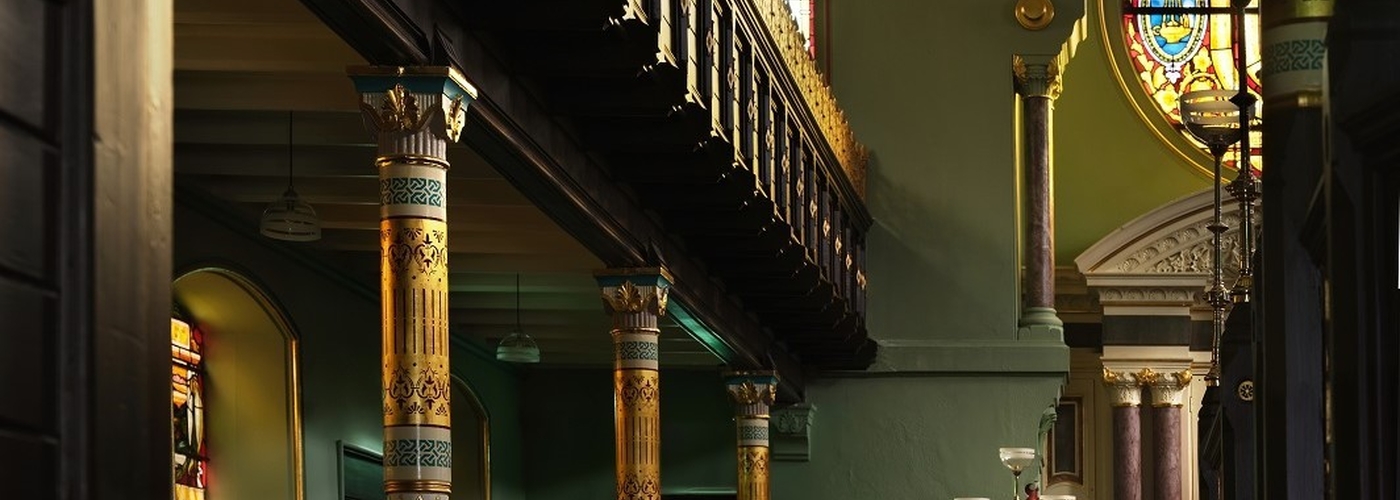Jonathan Schofield interviews Katy Marks about the transformation of the Cheetham Hill Road attraction
This was our story when the Jewish Museum re-opened. It is now up for the top architectural gong, The Stirling Prize. It's already garnered the RIBA North West Award 2023 and RIBA North West Project Architect of the Year Award 2023. It's pleasing to see we right about this project.
Often smaller is beautiful in architecture. It can get even better when small-scale architecture gains charm by a fruitful mix of old and new. Stephenson Studios proved this with the superb Halle St Peter’s extension in Ancoats. Now Katy Marks of the grandly monikered Citizen Design Bureau has delivered a similar joy with Manchester Jewish Museum on Cheetham Hill Road.
The museum feels an important building in ways that go far beyond architecture.
The way Marks got the job was interesting. She says: “The museum didn’t ask for drawings or designs but chose us on the basis of our ethos and ideas. It was an open competition. We were super-excited when the museum took a punt on us.”
Not that it’s been an easy journey.
“The whole thing was a challenge,” says Marks. “The ridiculous process of construction during COVID was incredibly difficult. Especially when, as a practice, we are based in London. We were having people carrying cameras around and trying to coordinate things on Zoom. I was supposed to be shielding too as I was very ill. I was going through chemotherapy while working. It feels like it’s almost a miracle that it’s finished."

There are two main elements to the £6m project. There’s the jewel-like synagogue designed by Edward Salomons and completed in 1874 and the extension, which like much of Halle St Peter’s features, elevations in cor-ten steel. The synagogue was built for Sephardic Jews, those who spread out across Europe and elsewhere after expulsion from Spain and Portugal in 1492. The other main branch of Manchester Jewry is Ashkenazi, those Jews from Eastern Europe often made into refugees by pogroms.
For centuries the Sephardic Jews had lived within an Islamic world both in Spain and North Africa. Thus Jewish architect Edward Salomons included many elements that seem more at home in a mosque, the style is known as "Mudejar". (Edward Salomons was a prolific Manchester architect and one of the first prominent Jewish architects in the country. Another well-known Manchester building is the former Reform Club from 1870 on King Street, now hosting Grand Pacific restaurant.)
Marks has had fun with these Moorish elements. She says: “The external decoration of the extension is inspired by what we saw in Salomon’s building and the way it referenced Islamic architectural culture. I was really interested in this being a contemporary Jewish building in Manchester surrounded by Muslim businesses. I thought we needed to resonate with that diversity almost in a playful way and also simply to grab attention.”
She pauses before continuing, “This is a really strange area of warehouses, neon signs, sheds and so on where the museum has found it difficult to have a presence on the street. We had to be sensitive to the older building here but produce something that stood out and turned heads. The exterior geometric patterns seem to be working in that way, especially at night, when we can light it up with great effect.”

The dramatic new exterior complements the tones of the neighbouring synagogue yet is very much its own building. It’s a clever idea and on entering the intelligence in the design is maintained. There’s a vegetarian kosher cafe to the left but the eye is led straight ahead between welcoming walls, to the north brand new, to the south 147-year-old brickwork. There's a clear route that takes you up a floor, through the new exhibition spaces and then across a bridge to an added moment of drama as the beautifully restored interior of the former synagogue, with its vivid stained glass, is revealed.
Those new exhibition spaces in the extension are lovely in pale wood with at one point a window that links you back to the 1874 building and a view of the wall of the older building and a rose window opposite. The presentations in the cabinets, the video and audio are excellently arranged by All Things Studio.
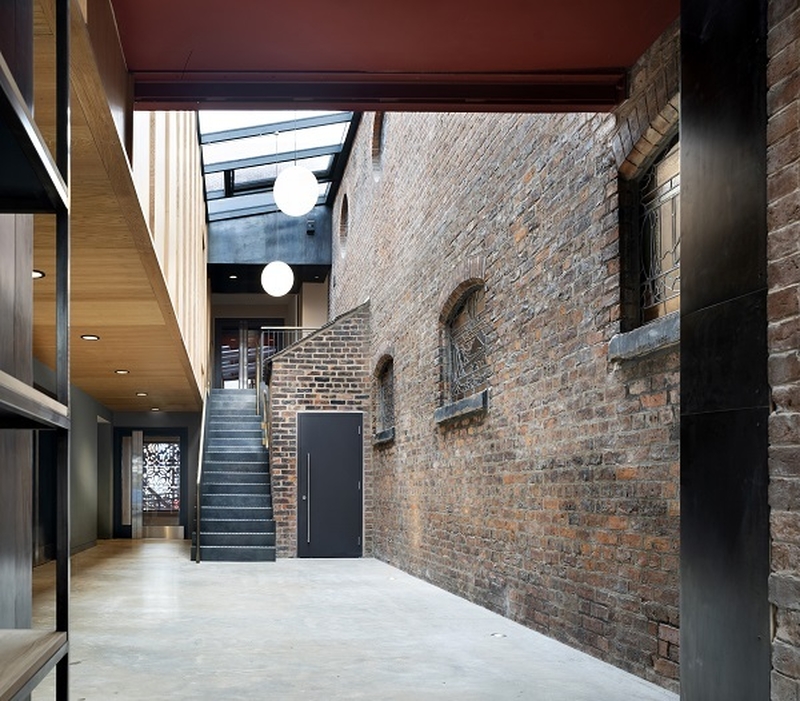
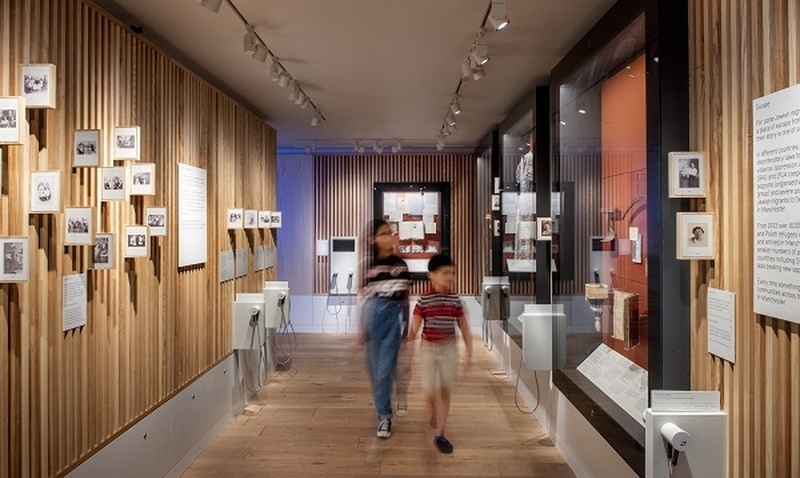
One video wall is incredibly moving and tells of Jewish migration mainly from eastern Europe and Germany in a series of mini-monologues over carefully chosen images.
“We went away at a time of a very bad pogrom, my uncle was crippled, his two children were killed as was his wife. Nobody wanted him.”
“When I came here my uncle bought me suits from Lewis'. I felt very well. I took to England like a duck takes to water.”
“I was moved into a house in Northumberland Street and I was told you are now in a nice country, a normal country and you must behave yourself.”
“I used to walk up and down here and they were all Jewish shops and I used to read the names, Kleemans, Jacobs, Cohen, and that was my idea of freedom, now you don’t have to be afraid. It was a wonderful feeling.”
The poignancy of enforced migration is writ large in the museum but there is much much more to enjoy in the exhibits, often about the minutiae of life. The whole place feels warm, hospitable, offering a welcome to everybody.
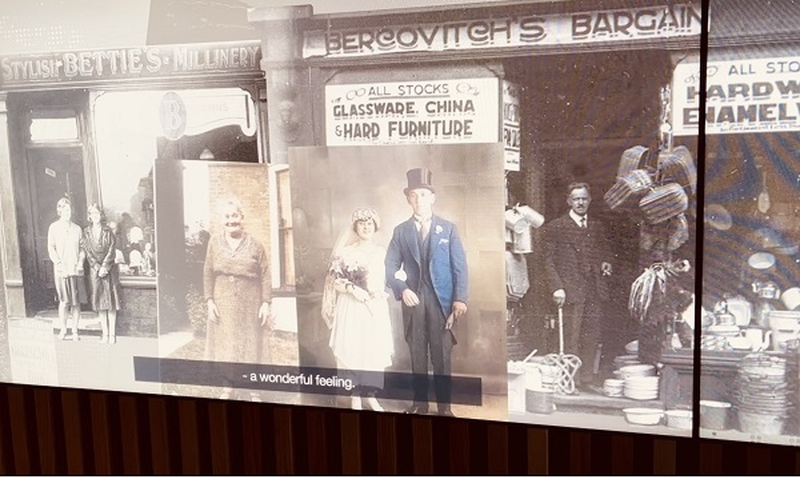
Marks and the CEO of the museum, Max Dunbar, are acutely aware of the peculiar sensitivity surrounding religion at present. A Jewish museum in Cheetham Hill, in an area dominated by Muslim businesses, has to be sensitive. That doesn’t mean the museum shies away from telling the story of Judaism and its practice in Manchester but it does mean that the narrative of migration is the dominant theme rather than religion.
“On a personal level,” Marks, who is Jewish, says, “I felt really strongly about the project. We wanted to make sure in the exhibitions and the way the gallery works it expresses the religious, social and political diversity that exists within Jewish world and the wider world. There is real diversity amongst us all including amongst Jews, we don't all think as one entity. I wanted the museum to reflect that and not lecture people.”
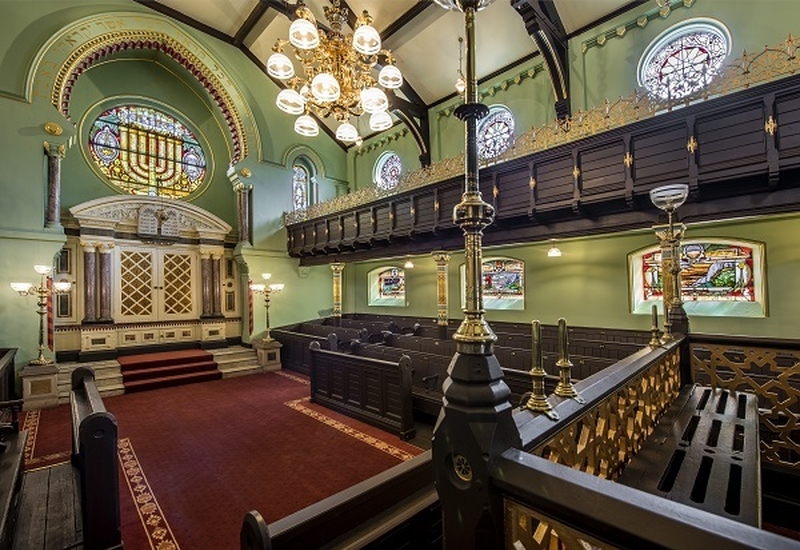
Marks and the Manchester Jewish Museum has succeeded. Here there is a civilised, gentle and well-thought-through approach to architecture that carries moments of drama too. People of all faiths and people without faith should not be put off visiting. Manchester Jewish Museum is an important reinvented addition to the city's visitor attractions, especially perhaps for people of faith, any faith, and even more so if those visitors have migration as part of their family story. It feels like an important building in ways that go far beyond architecture.
“Despite all the problems,” says Marks, “and with everything going on in the world, and in my life, to see it completed feels special, feels emotional.”
Manchester Jewish Museum is at 190 Cheetham Hill Road, Manchester, M8 8LW. £6 adult entry, £5 concessions, £4 kids, £4.50 per person for families. The museum can host all manner of parties, celebrations, events from all cultures and backgrounds.





